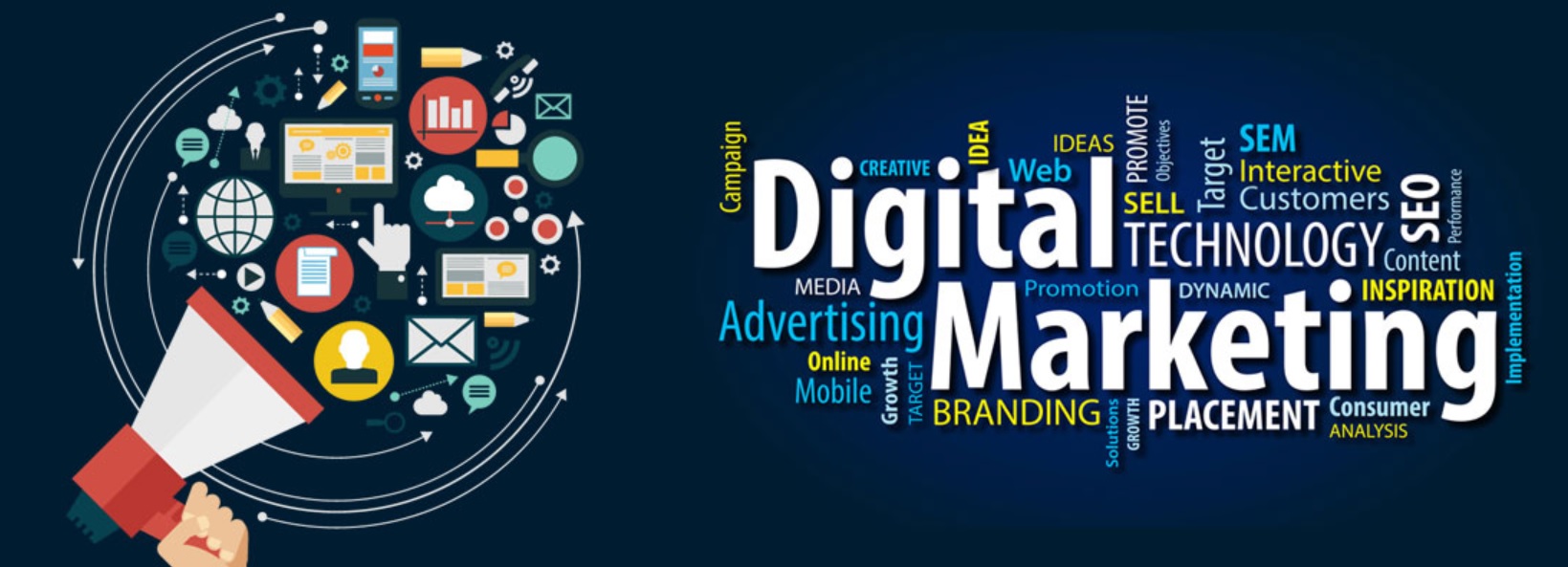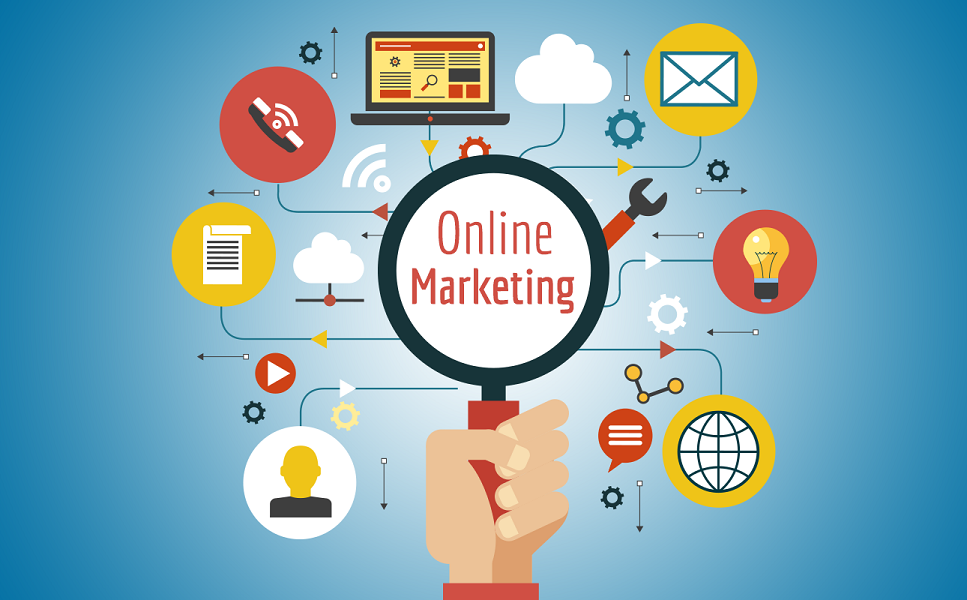Digital Marketing and Advertising Services: A Comprehensive Guide
In today’s fast-paced, technology-driven world, digital marketing and advertising services have become integral to business success. From small startups to large corporations, organizations across all industries are leveraging digital marketing to reach their target audiences, build brand awareness, and drive revenue growth. This guide explores the various aspects of digital marketing and advertising services, providing insights into the strategies, tools, and best practices that can help businesses thrive in the digital landscape.
1. Introduction to Digital Marketing
Digital marketing encompasses all marketing efforts that use the internet or electronic devices. Businesses leverage digital channels such as search engines, social media, email, and websites to connect with current and prospective customers. Unlike traditional marketing methods, digital marketing provides businesses with more control, tools, and data to measure the effectiveness of their campaigns in real time.
1.1 The Evolution of Digital Marketing
The evolution of digital marketing can be traced back to the 1990s when the internet became a widely accessible platform. Early digital marketing efforts were rudimentary, involving basic banner ads and email marketing. As technology advanced, so did digital marketing techniques. Today, digital marketing is a sophisticated discipline, utilizing data analytics, artificial intelligence (AI), and automation to deliver personalized and highly targeted campaigns.
1.2 The Importance of Digital Marketing
Digital marketing is essential for businesses in the modern era due to the increasing reliance on digital platforms by consumers. With more than half of the world’s population now using the internet, digital marketing provides businesses with the opportunity to reach a global audience. Moreover, digital marketing allows for precise targeting, enabling businesses to reach specific demographics and consumer segments with tailored messages.
2. Key Components of Digital Marketing
Digital marketing is a multifaceted discipline that involves various strategies and techniques. The following are some of the key components of digital marketing:
2.1 Search Engine Optimization (SEO)
Search Engine Optimization (SEO) is the process of optimizing a website to rank higher in search engine results pages (SERPs). SEO involves various techniques, including keyword research, on-page optimization, and backlink building, to improve a website’s visibility to search engines like Google.
- Keyword Research: Identifying the keywords and phrases that potential customers use to search for products or services online.
- On-Page Optimization: Ensuring that the website’s content, meta tags, and structure are optimized for search engines.
- Backlink Building: Acquiring high-quality links from other websites to improve the site’s authority and ranking.
SEO is crucial for driving organic traffic to a website, which is often more valuable than paid traffic because it indicates that the user is actively searching for information related to the business’s offerings.
2.2 Pay-Per-Click (PPC) Advertising
Pay-per-click (PPC) advertising is a digital advertising model where businesses pay a fee each time their ad is clicked. Google Ads is one of the most popular PPC platforms, allowing businesses to create ads that appear on Google’s search engine and its partner websites.
- Ad Copy: Crafting compelling ad copy that entices users to click on the ad.
- Bid Management: Setting bids for keywords to ensure that the ad appears in a favourable position.
- Landing Pages: Designing landing pages that are optimized for conversions, ensuring that users take the desired action after clicking on the ad.
PPC advertising offers businesses immediate visibility in search engine results, making it an effective way to drive traffic and conversions quickly.
2.3 Social Media Marketing
Social media marketing involves promoting a brand and its products or services on social media platforms like Facebook, Instagram, Twitter, and LinkedIn. Social media marketing can be both organic (unpaid) and paid.
- Content Creation: Developing engaging content that resonates with the target audience, including posts, videos, and stories.
- Community Management: Interacting with followers, responding to comments, and fostering a sense of community around the brand.
- Social Media Ads: Creating targeted ads on social media platforms to reach specific demographics based on interests, behaviours, and other criteria.
Social media marketing is a powerful tool for building brand awareness, engaging with customers, and driving traffic to a website or landing page.
2.4 Content Marketing
Content marketing focuses on creating and distributing valuable, relevant, and consistent content to attract and retain a clearly defined audience. Content marketing aims to drive profitable customer action by providing useful information that solves a problem or meets a need.
- Blogging: Writing articles on topics relevant to the target audience, helping to establish the brand as an authority in its industry.
- E-books and Whitepapers: Creating in-depth content that provides value to the reader, often in exchange for their contact information.
- Video Marketing: Producing video content that educates, entertains, or inspires the audience.
Content marketing is essential for building trust with the audience and nurturing leads through the buyer’s journey.
2.5 Email Marketing
Email marketing is the process of sending targeted emails to a list of subscribers to promote products, services, or content. Email marketing is one of the most cost-effective digital marketing strategies, offering a high return on investment (ROI).
- List Building: Collecting email addresses through lead magnets, sign-up forms, and other methods.
- Segmentation: Dividing the email list into segments based on criteria such as demographics, purchase history, and engagement level.
- Email Campaigns: Crafting and sending emails that are personalized, relevant, and engaging.
Email marketing allows businesses to communicate directly with their audience, build relationships, and drive conversions.
2.6 Influencer Marketing
Influencer marketing involves partnering with influencers—individuals with a large following and influence in a particular niche—to promote a brand’s products or services. Influencer marketing leverages the trust and credibility that influencers have built with their audience.
- Identifying Influencers: Find influencers who align with the brand’s values and have a relevant audience.
- Collaborations: Working with influencers to create content that promotes the brand, such as sponsored posts, product reviews, or giveaways.
- Measurement: Tracking the performance of influencer campaigns to assess their impact on brand awareness, engagement, and sales.
Influencer marketing is particularly effective for reaching niche audiences and building brand credibility.

3. Digital Advertising Services
In addition to digital marketing, businesses can also leverage various digital advertising services to promote their products and services online. Digital advertising involves paying for ad placements on digital platforms to reach a broader audience.
3.1 Display Advertising
Display advertising involves placing visual ads on websites, apps, or social media platforms. Display ads can be in the form of banners, images, videos, or interactive content.
- Banner Ads: Rectangular ads that appear at the top, bottom, or sides of a webpage.
- Video Ads: Short video clips that play before, during, or after video content on platforms like YouTube.
- Interactive Ads: Ads that engage users through interactive elements like quizzes, games, or surveys.
Display advertising is effective for increasing brand awareness and reaching a large audience, but it may require multiple impressions before users take action.
3.2 Programmatic Advertising
Programmatic advertising is the automated buying and selling of digital ad space using algorithms and data. Programmatic advertising allows businesses to target ads more precisely and efficiently.
- Real-Time Bidding (RTB): An auction-based process where ad inventory is bought and sold in real time.
- Audience Targeting: Using data to target specific audience segments based on demographics, behaviour, interests, and other criteria.
- Ad Optimization: Automatically adjust bids and placements to maximize the performance of ad campaigns.
Programmatic advertising offers businesses a scalable and data-driven approach to digital advertising, ensuring that ads are delivered to the right audience at the right time.
3.3 Native Advertising
Native advertising is a type of paid advertising that matches the look, feel, and function of the platform on which it appears. Native ads are designed to blend in with the content, making them less intrusive and more engaging.
- Sponsored Content: Articles, videos, or other content that is sponsored by a brand and appears on a publisher’s platform.
- In-Feed Ads: Ads that appear in the user’s news feed on social media platforms like Facebook and Instagram.
- Recommendation Widgets: Ads that appear as recommended content on websites, often labelled as “You Might Also Like” or “Sponsored Links.”
Native advertising is effective for driving engagement and building trust, as it provides value to the user without disrupting their experience.
3.4 Affiliate Marketing
Affiliate marketing is a performance-based advertising model where businesses pay affiliates (partners) a commission for driving traffic or sales through their referral links.
- Affiliate Networks: Platforms that connect businesses with affiliates who can promote their products or services.
- Tracking and Reporting: Monitoring the performance of affiliate campaigns using tracking software to ensure accurate attribution.
- Commission Structures: Setting commission rates and terms for affiliates based on the desired actions, such as clicks, leads, or sales.
Affiliate marketing is a cost-effective way for businesses to expand their reach and drive sales, as they only pay for results.
Artificial Intelligence Software Development: A Comprehensive Guide
4. The Role of Data in Digital Marketing and Advertising
Data plays a critical role in digital marketing and advertising, enabling businesses to make informed decisions, optimize campaigns, and measure performance.
4.1 Data-Driven Marketing
Data-driven marketing involves using data to inform marketing strategies and decisions. By analyzing customer data, businesses can gain insights into consumer behaviour, preferences, and trends, allowing them to create more targeted and effective campaigns.
- Customer Segmentation: Dividing the customer base into segments based on data such as demographics, purchase history, and behaviour.
- Personalization: Using data to deliver personalized experiences and messages to individual customers.
- Predictive Analytics: Leveraging data and machine learning to predict future customer behaviour and outcomes.
Data-driven marketing helps businesses maximize their ROI by ensuring that their marketing efforts are aligned with customer needs and preferences.
4.2 Marketing Analytics
Marketing analytics involves measuring and analyzing the performance of marketing campaigns to assess their effectiveness and identify areas for improvement.
- Key Performance Indicators (KPIs): Metrics used to evaluate the success of marketing campaigns, such as click-through rates, conversion rates, and customer acquisition costs.
- A/B Testing: Comparing two versions of a marketing asset (e.g., email, landing page, ad) to determine which performs better.
- Attribution Modeling: Assigning credit to different marketing channels and touchpoints that contribute to a conversion.
Marketing analytics provides businesses with the data they need to optimize their campaigns, allocate budgets effectively, and achieve their marketing goals.
5. The Future of Digital Marketing and Advertising
The digital marketing and advertising landscape is constantly evolving, driven by technological advancements and changing consumer behaviours. The following are some trends and developments that are shaping the future of digital marketing:
5.1 Artificial Intelligence and Machine Learning
Artificial intelligence (AI) and machine learning are transforming digital marketing by enabling more advanced data analysis, automation, and personalization. AI-powered tools can analyze vast amounts of data to identify patterns and insights, automate repetitive tasks, and deliver personalized experiences at scale.
- Chatbots: AI-powered chatbots can engage with customers in real time, answering questions, providing recommendations, and assisting with purchases.
- Predictive Marketing: AI can predict customer behaviour and outcomes, allowing businesses to tailor their marketing strategies accordingly.
- Dynamic Content: AI can create dynamic content that changes based on the user’s behaviour, preferences, and context.
AI and machine learning are making digital marketing more efficient, effective, and personalized, helping businesses deliver better experiences to their customers.
5.2 Voice Search and Voice-Activated Devices
The rise of voice search and voice-activated devices like Amazon’s Alexa and Google Home is changing the way consumers search for information and interact with brands.
- Voice Search Optimization: Optimizing content for voice search by using natural language, answering questions directly, and focusing on long-tail keywords.
- Voice-Activated Ads: Creating ads that are designed to be heard and interacted with through voice-activated devices.
- Conversational Marketing: Engaging with customers through voice-enabled platforms, allowing for more natural and conversational interactions.
Augmented and Virtual Reality Solutions: Transforming the Modern World
As voice search and voice-activated devices become more prevalent, businesses need to adapt their digital marketing strategies to ensure that they are accessible and relevant to voice search users.
5.3 The Growing Importance of Video Content
Video content is becoming increasingly important in digital marketing, as consumers prefer to consume information in visual formats.
- Live Streaming: Live streaming on platforms like Facebook, Instagram, and YouTube allows brands to engage with their audience in real time, creating a sense of immediacy and authenticity.
- Video SEO: Optimizing video content for search engines by using relevant keywords, descriptions, and tags to improve visibility.
- Interactive Videos: Creating interactive video content that allows users to engage with the content and make choices that affect the outcome.
Video content is a powerful tool for storytelling, education, and engagement, and it is expected to play an even more significant role in digital marketing in the coming years.
5.4 Privacy and Data Protection
As data privacy concerns grow, businesses must prioritize data protection and compliance with regulations like the General Data Protection Regulation (GDPR) and the California Consumer Privacy Act (CCPA).
- Data Transparency: Being transparent about data collection practices and obtaining explicit consent from users.
- Secure Data Storage: Implementing robust security measures to protect customer data from breaches and unauthorized access.
- Privacy-Focused Marketing: Adopting marketing practices that respect user privacy and preferences, such as using anonymized data and offering opt-out options.
Privacy and data protection are becoming increasingly important in digital marketing, and businesses that prioritize these aspects will build trust with their customers and avoid potential legal issues.
Digital marketing and advertising services are essential components of a successful business strategy in the modern era. By leveraging various digital marketing techniques, businesses can reach their target audience, build brand awareness, and drive revenue growth. As technology continues to evolve, businesses must stay informed about the latest trends and developments in digital marketing to remain competitive in the digital landscape. Whether it’s through SEO, PPC, social media marketing, or data-driven strategies, the key to success in digital marketing is to stay agile, adapt to changes, and continuously optimize campaigns to achieve the best results.





Post Comment